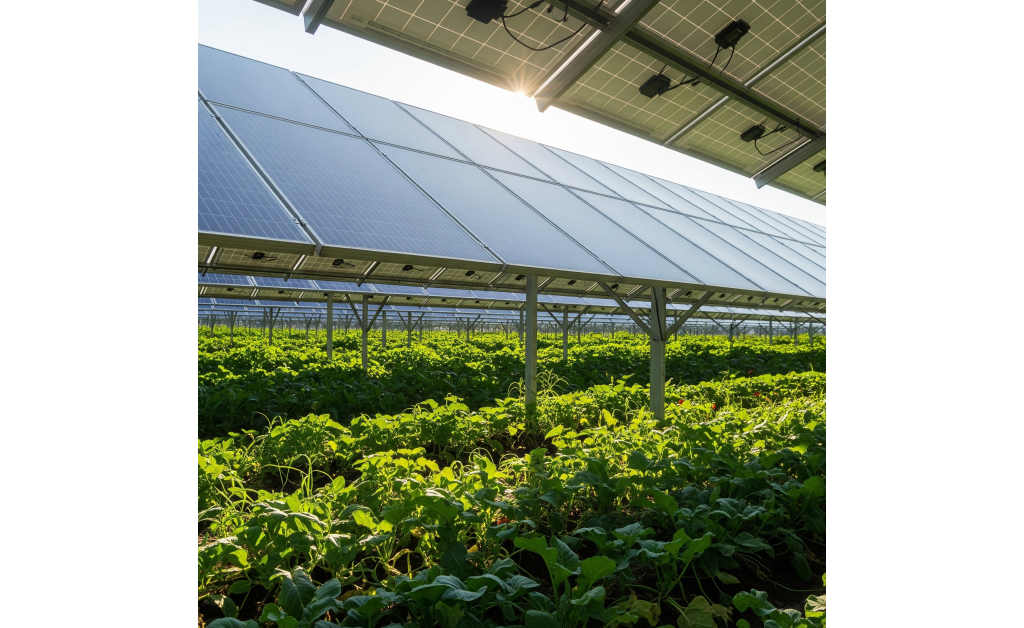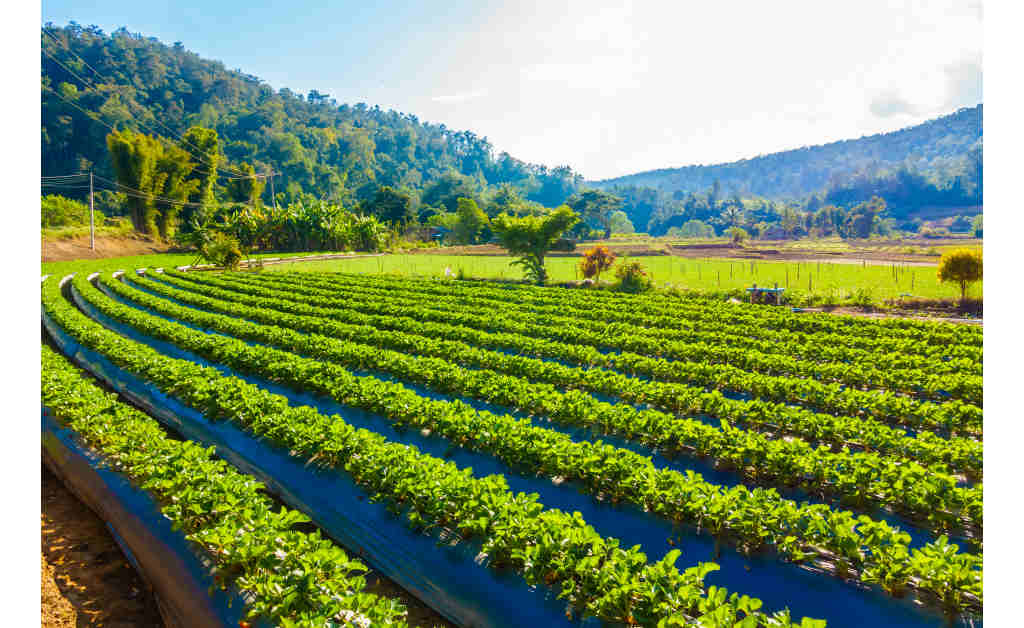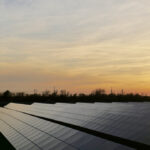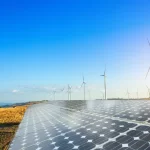Introduction
Organic farming is the hub of new-age farming, and two new-age solutions—agrivoltaic farming and solar-powered irrigation pumps—are leading the change in going green and being economical. Agrivoltaic technology integrates solar panels with farmland such that the farmer can produce green electricity while cultivating crops. Likewise, solar irrigation substitutes fuel-based water pumps with solar water pumps to provide a low-cost and green source of water to the crops.

With the growing need for food and the imperative need to lower carbon footprints, agrivoltaic technologies provide two-fold advantage: energy generation and increased agricultural productivity. Apart from delivering economic relief to farmers through diminished costs of energy, these technological advancements help in environmental conservation as well. Let us see through this blog what agrivoltaic farming is all about, how solar irrigation helps save water, and the ecological and economic benefits of these innovative technologies.
Understanding Agrivoltaics
Agrovoltaics or Agro-photovoltaics refers to the system of installing solar panels on agricultural fields to generate electricity and at the same helping to grow crops. By using the same land for both energy production and other purposes, agrivoltaic farming maximises land efficiency in contrast to traditional solar farms, which take up large amounts of land exclusively for energy production.
How Does Agrivoltaic Technology Work?
In agrivoltaic, solar panels are optimally placed above crops at the right height and angle. The electricity generated off these panels can be pumped into the grid or be used to farm. The shading effect of solar panels enhances moisture retention of soil resulting in reduction in evaporation of water and protection of crops against poor weather.
Benefits of Agrivoltaic Farming
- Energy Generation: Farmers can produce electricity to power farm equipment, irrigation systems, and even sell surplus energy.
- Crop Protection: Panels shield plants from excessive sunlight, wind, and heavy rainfall.
- Efficient Land Use: Instead of choosing between farming and solar energy, agrivoltaics enables both on the same land.
- Climate Resilience: Reduced water evaporation and moderated temperatures help crops thrive under changing climate conditions.
Real-World Agrivoltaic Projects
Several countries have successfully implemented agrivoltaic solutions:
- Japan’s Solar Sharing Projects: Farmers in Japan employ agrivoltaic systems to farm crops such as rice and lettuce beneath solar panels.
- France’s Sun’Agri Program: This initiative adjusts solar panel inclines to achieve the best crop yields and energy output.
- India’s KUSUM Scheme: An Indian government program that encourages agrivoltaic agriculture through solar panel installations on farmland being subsidized.
Solar Irrigation: A Water-Smart Farming Approach
What Is a Solar-Powered Irrigation System?
Solar irrigation utilizes solar energy to power water pumps for crop irrigation. Unlike conventional irrigation systems that rely on diesel or electricity, solar-powered irrigation systems harness renewable energy, making water distribution more efficient and sustainable.
Solar irrigation involves the use of the solar energy to provide the water pumps to irrigate crops. Unlike conventional irrigation systems that rely on diesel or electricity, solar-powered irrigation systems harness renewable energy, making water distribution more efficient and sustainable.
How Do Solar Irrigation Systems Work?
- Solar Panels: Trapping sunlight and transferring it into electricity.
- Pump Controller: Controls the supply of power to provide maximum pump efficiency.
- Water Pump: Pumps water from sources like borewells, rivers, or reservoirs.
- Drip or Sprinkler System: Provides water uniformly to plants with little wastage.
Advantages Over Conventional Irrigation
- Cost-Effective: It does not have to rely on the high-priced fossil fuels and lowers the electricity expenses.
- Water Efficiency: Drip irrigation is an advanced technology to prevent the wastage of water.
- Low Maintenance: The services of solar pumps are low as compared to diesel or electric pumps.
- Eco-Friendly: Lessens carbon gases and reliance on non-renewable energy sources.
Case Studies of Successful Solar Irrigation
- Kenya’s Solar-Powered Drip Irrigation: Farmers doubled their yields using solar irrigation on a small scale.
- India’s Solar Pump Adoption: Thousands of farmers have shifted to solar irrigation thanks to government incentives under the PM-KUSUM scheme.
- Morocco’s Solar Water Pumping Initiative: The project offers rural farmers sustainable irrigation options, limiting water scarcity challenges.
Economic and Environmental Benefits
Cost-Effectiveness and Return on Investment (ROI)
- Lowered Operating Costs: Farmers save electricity and fuel costs.
- Income Generation: The excess sunlight can be supplied into the grid.
- Long-Term Investment: While the cost of installation is high, ROI is favorable because operating expenses are low.
Environmental Impact
- Water Conservation: Agrivoltaic panels’ shading minimizes water loss through evaporation.
- Carbon Footprint Reduction: Solar-powered irrigation systems instead of diesel pumps lower greenhouse gas emissions.
- Soil Health Improvement: Controlled shading prevents soil erosion and degradation.
Government Incentives and Policies
The majority of governments worldwide are encouraging the adoption of agrivoltaic technology by:
- Subsidies & Grants: Financial support for the installation of solar panels on farms.
- Tax Incentives: Exemptions and agriculture deductions on renewable energy.
- Green Energy Initiatives: Initiatives for sustainable agriculture programs.
Challenges and Future Outlook
Barriers to Large-Scale Adoption
- High Initial Costs: Upfront cost is a drawback even with long-term gains.
- Technical Knowledge Gap: Agrivoltaic systems should be trained on how to operate and maintain by farmers.
- Land Use Conflicts: Farmers are concerned that solar panels will hinder the development of crops.
Innovations and Future Trends
- Bifacial Solar Panels: These panels can harness sunlight on both sides, which enhances efficiency.
- AI-Driven Irrigation Systems: Artificial intelligence maximizes water allocation for optimal yield.
- Floating Solar Farms: Solar panels placed on reservoirs to save water and produce energy.
Conclusion
Agrivoltaic systems and solar-powered irrigation are revolutionizing contemporary agriculture through the synchronization of energy efficiency with environmentally friendly agricultural methodologies. Not only do these technologies drive increased productivity in crops and lower operational expenses, but they also help conserve water and protect the environment.
Farmers, policymakers, and agricultural scientists need to join hands to increase the use of agrivoltaic agriculture and solar irrigation. By investing in such technologies, we can build a stronger, environmentally friendly, and more profitable farming industry. If you wish to learn more about implementing agrivoltaic solutions for your farm, begin by learning about government incentives, consulting professionals, and taking small-scale implementations to experience the advantages firsthand.
Frequently Asked Questions (FAQs)
Agrivoltaic farming is the practice of integrating solar panels with agricultural land to generate energy while growing crops, maximizing land use efficiency.
They provide renewable energy, protect crops from extreme weather, reduce water evaporation, and enhance climate resilience.
It is an irrigation system powered by solar energy, replacing traditional fuel-based water pumps with an eco-friendly alternative.
While initial setup costs are high, the long-term savings on energy and water make these systems cost-effective investments.
Yes, many governments offer subsidies, tax benefits, and grants to promote agrivoltaic and solar irrigation systems.












